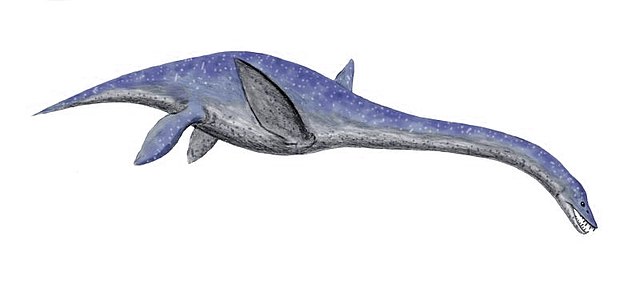Top Qs
Timeline
Chat
Perspective
1997 in paleontology
From Wikipedia, the free encyclopedia
Remove ads
Paleontology or palaeontology is the study of prehistoric life forms on Earth through the examination of plant and animal fossils.[1] This includes the study of body fossils, tracks (ichnites), burrows, cast-off parts, fossilised feces (coprolites), palynomorphs and chemical residues. Because humans have encountered fossils for millennia, paleontology has a long history both before and after becoming formalized as a science. This article records significant discoveries and events related to paleontology that occurred or were published in the year 1997.
Wikimedia Commons has media related to 1997 in paleontology.
Remove ads
Plants
Cycadophytes
Cycadophyte research
- Hopkins and Johnson briefly report the first occurrence of cycad leaves from the Eocene Okanagan Highlands Klondike Mountain Formation[2] which will later be identified to the family Zamiaceae.[3]
Angiosperms
Remove ads
Fungi
Paleomycological research
- LePage et al briefly describe the first instance of ectomycorrhizae in the fossil record, based on specimens from the Eocene Okanagan highlands Princeton chert site. The fungi are associated with Pinus roots and were considered similar to the modern fungal genera Rhizopogon and Suillus[6]
Remove ads
Arthropoda
Insects
Plesiosaurs
Newly Named Plesiosaurs
Remove ads
Archosauromorphs
Summarize
Perspective
Pseudosuchians
General pseudosuchian research
- A review of Australasian fossil crocodilians is published by Willis (1997).[12]
Pterosaurs
Newly Named Pterosaurs
Non-avian dinosauromorphs
- Paleontologist Karen Chin received a coprolite that was excavated during 1995 from strata dating back to the Maastrichtian in Saskatchewan, Canada. The specimen was about 17 inches (44 cm) long and contained fragments of bone. Due to its size, contents and age, the coprolite was believed to have been the remains of Tyrannosaurus rex feces. This discovery was announced in a 1998 paper published in the journal Nature.
- A Saharan expedition under the leadership of Paul Sereno yielded fruit when a team member stumbled on the bones and skull of Nigersaurus taqueti. During this and a subsequent 1999 expedition about 80% of the animal's skeleton were discovered. Later in the year of the second expedition, a formal description of the animal was published.
- French paleontologist Philippe Taquet reported the finding of fossilized theropod embryos preserved in Portuguese dinosaur eggs. These eggs were from the Jurassic period dating to about 140 million years ago, nearly twice as old as any previously recovered dinosaur embryos, which had only been known from about 70 million years ago in Late Cretaceous strata.
- Psittacosaurus gastroliths documented.[13]
- Panoplosaurus gastroliths documented.[14]
Newly named non-avian dinosauromorphs
Data courtesy of George Olshevsky's dinosaur genera list.[15]
Birds
Newly named birds
Remove ads
Synapsids
Eutherians
Remove ads
Humans
- Genetecist Michael Hammer reported findings that demonstrate that after the initial "out of Africa" radiation of modern humans at about 100,000 years ago, some humans eventually returned to Africa between 50,000 and 10,000 years ago.
Exopaleontology
- Richard B. Hoover of NASA's Marshall Space Flight Center photographs what he believes to be microfossils in the martian Murchison meteorite.
References
Wikiwand - on
Seamless Wikipedia browsing. On steroids.
Remove ads












